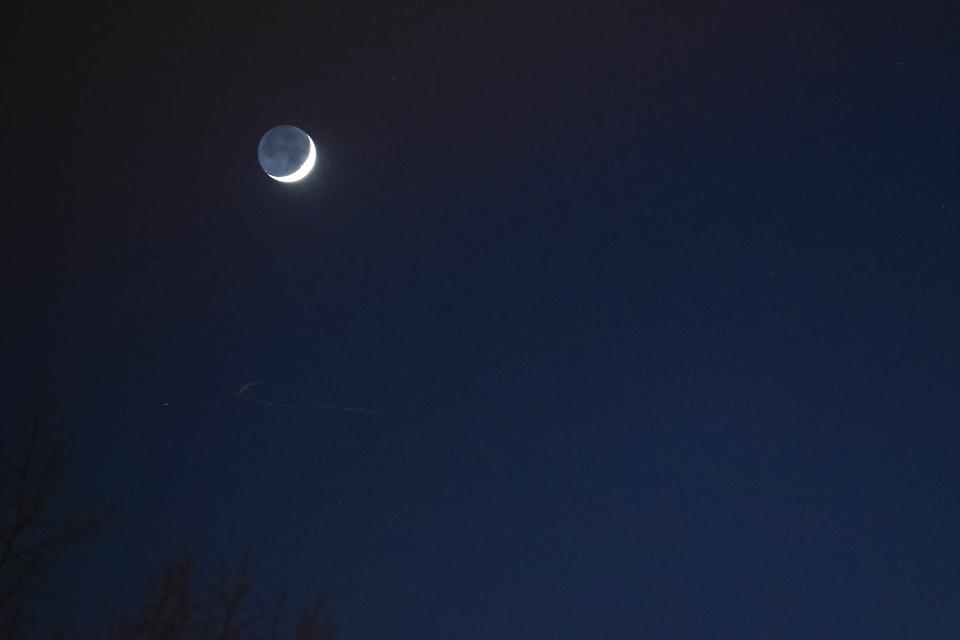See the Moon and Jupiter Nearly Touch in the Night Sky Tonight
Everything you need to know — from where to look to what you’ll need — to spot the moon and Jupiter conjunction.

From a green comet to a planet-packed night sky, 2023 has been a dream for stargazers so far — and it’s about to get even better with Wednesday’s conjunction of the moon and Jupiter.
The conjunction — the term for two space objects, usually planets and the moon, appearing close to each other — will appear in the southwestern sky around 9 p.m. ET. This space meeting will occur in the Pisces constellation. At the moment of conjunction, they’ll appear within 1.8 degrees of each other, according to the StarWalk app.
How can you see the moon and Jupiter conjunction for yourself? Here’s everything you need to know, from where to look to what you’ll need to spot it.
Where can I see the moon and Jupiter conjunction?
The moon and Jupiter’s meeting will occur in the southwest sky on Jan. 25. The waxing crescent moon will be less than half illuminated; that means Jupiter will appear even more vibrant (although, to the naked eye, it still looks like a big white dot).
Jupiter will appear to the northeast of the moon after the sun sets. As the evening goes by, Jupiter and the moon will move toward each other, with the moment of conjunction hitting by 9 p.m. ET. Look further down toward the horizon to see Venus and Saturn hovering below.
You can view this night event from anywhere with clear views of the southwest sky; destinations with lower light pollution will enhance the visual, but it’s not required.
What gear do I need to see the conjunction of the moon and Jupiter?
Jupiter and the moon are both bright enough to spot with the naked eye, even from light polluted cities. You won’t need stargazing binoculars to watch the conjunction. However, visual aids can get you closer — and, they’ll help you see the comet Juno, a faint asteroid 6.5 degrees left of pair, according to the stargazing app SkySafari.
Telescopes won’t work for this conjunction; the moon and Jupiter are too far from each other to fit in one frame.
How close will the moon and Jupiter get?
At the moment of conjunction, the moon and Jupiter will appear within 1.8 degrees of each other (just a few finger widths away), according to SkySafari. That said, this is only how close they appear in the night sky — not how close they actually are. In space, Jupiter and the moon remain hundreds of thousands of miles away from each other.
For more Travel & Leisure news, make sure to sign up for our newsletter!
Read the original article on Travel & Leisure.

